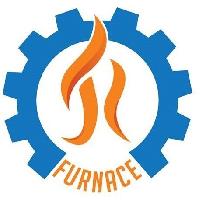Stress Relieving Furnace – Essential Heat Treatment for Dimensional Stability and Durability

Posted by jrfurnace
from the Business category at
18 Jul 2025 06:20:59 am.
internal stresses
that compromise structural integrity.
To address this challenge, industries depend on a highly specialized heat treatment process:
stress relieving
. This process is carried out in a stress relieving furnace, which heats metal components to a controlled temperature below their transformation point, helping to release internal stresses without changing the material’s core properties.
Understanding the Stress Relieving Process
The
stress relieving process
typically involves heating ferrous materials (like carbon steels and alloy steels) to between
550°C and 700°C
. Once the desired temperature is reached, the part is held for a specific soak time—usually one hour per inch of section thickness—before being cooled slowly, often in still air.
The purpose of this controlled heat cycle is to allow the material’s microstructure to relax and redistribute any residual stress left from:
Welding
Cold forming or bending
Machining operations
Casting
Shot blasting or peening
This treatment is especially critical when parts are expected to undergo additional machining or experience cyclic or high mechanical loads.
Types of Stress Relieving Furnaces
Different industries and components require different furnace configurations. The most commonly used stress relieving furnace types include:
1. Box-Type Furnaces
Suitable for small and medium-sized components, box-type furnaces offer front-loading access and are ideal for batch processing. They are often used in automotive and general fabrication sectors.
2. Bogie Hearth Furnaces
Designed for very large or heavy parts such as structural weldments, pressure vessels, and machine beds. These feature a movable hearth (bogie) for easy loading/unloading with cranes or forklifts.
3. Pit-Type Furnaces
Best for long cylindrical components such as shafts, rods, and pipes. The vertical design minimizes floor space and allows deep soak heating of vertical loads.
4. Continuous or Conveyor Furnaces
Used in high-volume production environments where smaller components move through heating and cooling zones on a conveyor belt. Common in automotive and tool manufacturing.
Key Features of a High-Quality Stress Relieving Furnace
Wide Temperature Range: From 300°C to 850°C, depending on material and process requirements
Multi-Zone Heating Control: Ensures precise temperature uniformity across large or complex parts
Reliable Insulation: Ceramic fiber blankets, refractory bricks, or hybrid solutions to retain heat and reduce energy costs
Air Circulation Fans (Optional): Promote even heating in low-temperature processes
Automated Control Systems: PID, PLC, or SCADA systems with programmable profiles and data logging
Loading Mechanism Compatibility: Designed for use with cranes, forklifts, or manipulators
Safety Features: High-temperature cutoffs, emergency shutoff, gas sensors (if gas-fired), and interlocking doors
Stress relieving is a critical process across numerous industries that produce high-precision or safety-critical components, including:
Automotive: Crankshafts, axles, gears, transmission housings
Aerospace: Structural brackets, landing gear components, turbine parts
Shipbuilding: Hull assemblies, support frames, marine shafts
Construction Equipment: Chassis, frames, excavator arms, hydraulic cylinders
Power Generation: Boiler parts, pressure vessels, steam pipes, turbine casings
Fabrication Shops: Welded structures, storage tanks, steel frameworks
In all these sectors, stress relieving enhances part life, improves dimensional accuracy, and prevents distortion during service or subsequent machining.
Benefits of Stress Relieving Heat Treatment
✅ Reduces risk of cracking and failure in service
✅ Prevents distortion during final machining
✅ Improves fatigue resistance under cyclic loads
✅ Ensures dimensional stability of critical components
✅ Enhances overall quality and reliability of the product
By incorporating stress relieving into the production workflow, manufacturers ensure that components maintain their geometry, strength, and functionality under real-world operating conditions.
Build Reliability Into Every Component
A
stress relieving furnace
is not just a machine—it’s a crucial investment in product quality and process control. Whether you’re treating massive pressure vessels or precision-machined parts, selecting the right furnace type and process design ensures that your parts stay reliable, safe, and accurate throughout their lifecycle.
For industrial setups that demand consistency and structural integrity, stress relieving furnaces play an indispensable role—quietly removing unseen dangers and enhancing material performance where it matters most.
Tags: stress relieving furnace
0 Comments



